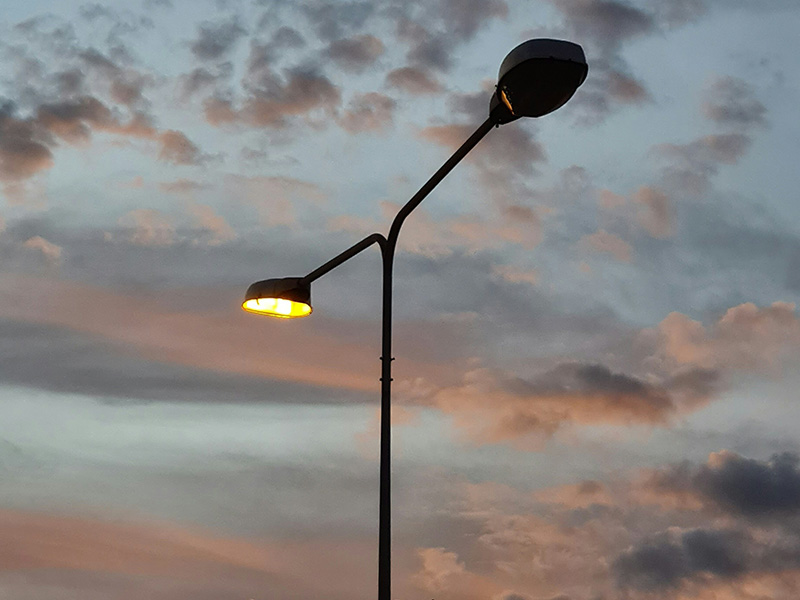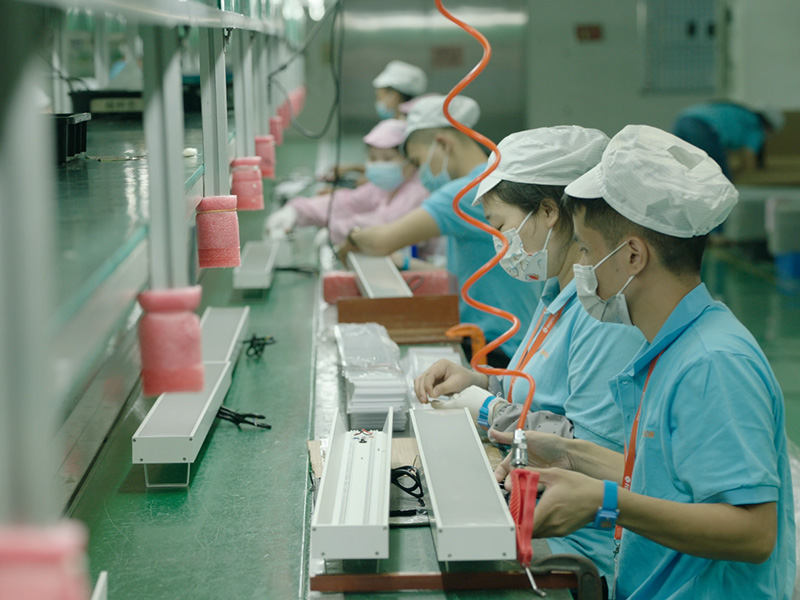Principle and Application of LED Lights
Basic Principle of LED:
A light-emitting diode (LED) is a semiconductor device that emits light when an electric current passes through it. The core of an LED is a PN junction, made from a combination of three or five compound semiconductor materials. When a forward voltage is applied, electrons from the N-region are injected into the P-region, and holes from the P-region are injected into the N-region. As these minority carriers move into each other’s regions, they recombine with the majority carriers, releasing energy in the form of light. The wavelength, and thus the color of the light emitted, is determined by the properties of the semiconductor material (specifically, the band gap width) that forms the PN junction.
Key Characteristics of LEDs:
LEDs have several key features that make them a popular choice for various applications:
- Small Size: Compact and easy to integrate into different designs.
- Low Power Consumption: Highly energy-efficient compared to traditional lighting options.
- Long Service Life: Can last up to 100,000 hours when operated at the correct current and voltage.
- High Brightness with Low Heat Emission: Efficiently converts energy into light, minimizing heat production.
- Environmental Friendliness: Free of toxic materials and fully recyclable.
- Durability: Robust and resistant to shock and vibration.
Classification and Applications of LEDs
LEDs are categorized into visible LEDs and invisible LEDs based on the type of light they emit.
Visible LEDs: Emit colors such as red, orange, yellow, green, blue, and violet.
- Red LEDs: Typically made from materials like GaP (binary system), AlGaAs (ternary system), and AlGaInP (quaternary system).
- Blue/White LEDs: Primarily made from GaN materials.
Invisible LEDs: Emit infrared or ultraviolet light, often used in applications such as remote controls, medical devices, and security systems.
Applications of LED Technology
LEDs have a wide range of applications across various industries:
LED Displays: Used in indoor and outdoor billboards, sports scoreboards, and information displays.
Signal Indicators: Utilized in traffic lights, highway and railway signals, airport runway indicators, and electronic equipment function indicators.
Decorative and Landscape Lighting: Employed in outdoor landscape lighting and indoor decorative lighting for aesthetic and functional purposes.
General and Specialized Lighting: Includes portable lighting (flashlights, headlamps), low-illumination lighting (corridor lights, door lights), reading lights (for aircraft, trains, and cars), microscope lamps, camera flashes, desk lamps, and street lamps.
Safety Lighting: Comprises mining lamps, explosion-proof lamps, emergency lamps, and safety indicator lamps.
Backlight Sources: Used in LCD screens, including those in TVs, smartphones, and other electronic devices.
Automotive Lighting: Includes both interior (dashboard, indicator lights) and exterior lighting (brake lights, taillights, side lights, and headlights).
Consumer Applications: Includes items such as children’s flashing shoes, LED Christmas lights, and other novelty items.
The LED Industry Chain
The LED industry chain can be divided into three segments: upstream, midstream, and downstream.
Upstream: Involves the production of single wafers and their epitaxial growth. This segment has a high entry threshold due to its technological complexity and significant capital investment.
Midstream: Focuses on LED chip processing. This segment also requires substantial technological expertise and investment, making it highly competitive internationally and presenting significant business risks.
Downstream: Involves LED packaging, testing, and application. This segment has a lower entry threshold compared to upstream and midstream operations.
In terms of profitability within the industry:
- Upstream and Midstream (Epitaxial Chips and Chips): Account for approximately 70% of the industry’s profits.
- Downstream (LED Packaging and Applications): Account for about 10-20% each of the total industry profits.
The LED industry continues to evolve, with advancements in technology driving down entry barriers and expanding applications across various sectors. As the industry grows, the focus remains on improving efficiency, reducing costs, and expanding the range of applications.





